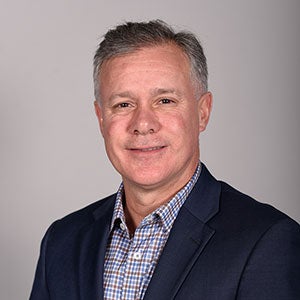
How is the School of Dental Medicine’s commitment to implementing new technology enhancing teaching opportunities for faculty and students?
The University of Pittsburgh School of Dental Medicine is committed to integrating new technologies into its teaching practices to enhance opportunities for both faculty and students. Dean Marnie Oakley has been integral to and supportive of furthering digital technology at Pitt Dental Medicine.
Here are some examples of how we are enhancing teaching opportunities:
- Advanced Simulation Technology
Incorporating advanced simulation technology allows students to practice dental procedures in a controlled environment before working with actual patients. This technology provides valuable feedback to both students and faculty, enabling them to refine techniques and improve patient outcomes. - Digital Dentistry
The adoption of digital dentistry tools such as intraoral scanners, 3D printers and computer-aided design/computer-aided manufacturing (CAD/CAM) systems allow students to design and fabricate dental restorations with precision. Faculty can use these technologies to demonstrate concepts more effectively and provide hands-on training in digital workflows.
Overall, by embracing new technology, the Pitt School of Dental Medicine is creating a more dynamic and interactive learning environment that prepares students for the evolving landscape of modern dentistry while providing faculty with innovative tools to enhance their teaching methodologies.
Can you tell alumni more about your vision for new digital labs being built at the School of Dental Medicine?
The vison of the new digital labs starts with the students in mind. Here is where we are headed:
- Advanced Infrastructure: Incorporating the latest hardware and software infrastructure to support high-performance computing, data storage, networking and visualization capabilities;
- Collaborative Spaces: Designing flexible and collaborative workspaces that facilitate interaction and idea exchange among researchers, students and industry partners;
- Interdisciplinary Research: Fostering interdisciplinary research initiatives that span across traditional academic boundaries, encouraging collaboration between experts in different fields to address multifaceted problems;
- Industry Engagement: Establishing partnerships with industry leaders to align research efforts with real-world challenges and opportunities, facilitating technology transfer and commercialization of innovations; and
- Training and Education: Providing opportunities for hands-on training, workshops and educational programs to develop skills in emerging technologies and prepare the next generation of digital innovators.
Essentially, we plan to create spaces for pre-doctoral students to residents and faculty to develop their skills in digital dentistry.
In your opinion, how can school-based technology improvements benefit incoming classes of dental medicine students?
School-based technology improvements in dental medicine can benefit incoming classes of students in several ways:
- Enhanced Learning Experience: Advanced technology can provide students with immersive and interactive learning experiences. Virtual simulations, augmented reality applications and 3D visualizations can help students better understand complex dental concepts and procedures, making learning more engaging and effective.
- Improved Skill Development: Technology-enabled training tools, such as virtual patient simulations and dental practice software, allow students to hone their clinical skills in a risk-free environment. This enables students to practice procedures repeatedly until they achieve proficiency, leading to greater confidence and competence when working with real patients.
- Access to Cutting-Edge Tools: Schools that invest in the latest dental technology give students access to state-of-the-art equipment and software used in modern dental practices. By familiarizing themselves with these tools early in their education, students are better prepared to adapt to advancements in the field and stay competitive in their careers.
- Preparation for Future Practice: As technology continues to play a larger role in dentistry, students who graduate from programs with strong technological foundations are better equipped to succeed in their future careers. They are prepared to leverage digital workflows, tele-dentistry platforms and other technological innovations to provide high-quality care to their patients and stay at the forefront of the profession.

